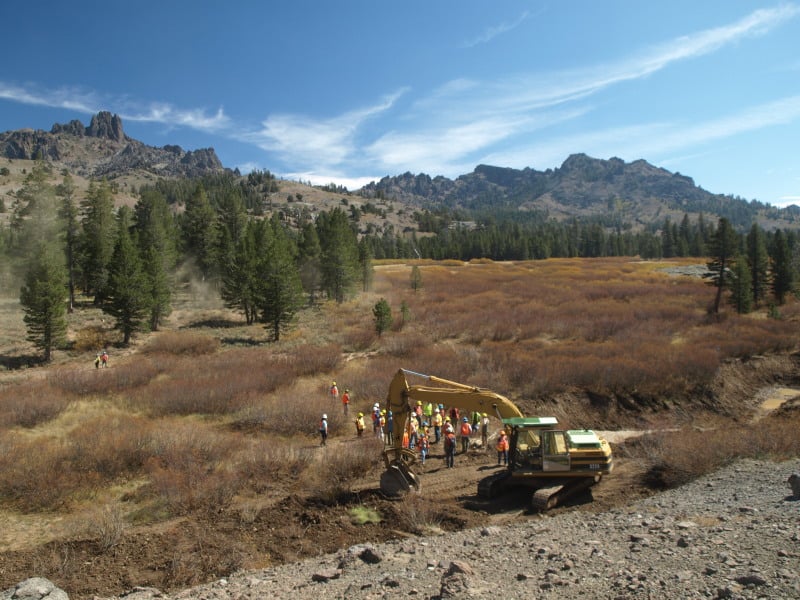Indian Valley, part of the Amador Ranger District, Eldorado National Forest, is being restored as a high elevation meadow, after decades of misuse. Grazing has ceased but, its impacts still linger. In the past, willows were removed and water was channeled away, causing increased erosion of these shallow and fragile soils. The water table has been lowered and the meadow hasn’t been able to support the vegetation that it used to.
Concentrating runoff by channeling the water causes increased erosion, especially when we have rain on snow events. There were significant impacts from the winter of 1996. This project aims to get the water to spread out, linger, and re-charge the water-holding capacity of up to 500 acres.
A system of catchment ponds, compacted soil plugs, and native plant re-vegetation will cause snowmelt runoff to spread out and slow the erosive power of concentrated water. This project has a history of being de-funded and handed off but, all things came together when Coca Cola offered up some cash, which led to some additional matching funds and collaboration. The Ranger District had to jump through all the NEPA hoops, as surveys had to be completed for endangered willow flycatchers, frogs and toads. The one impact they could not remedy is a historic road, which travels across the meadow. Relocation was made impossible, due to archaeological sites. Removal or closure would be politically impossible.
The willows have made a great comeback, since grazing ended. However, you can clearly see that the foreground vegetation is quite sparse. Raising the water table a few feet will lead to meadow restoration. The numerous braided side channels would re-charge the water table. There appears to be one of the historic man-made channels in this picture.
Here is what appears to be one of the natural side channels, which no longer is supplied with water, due to lowered water table, erosion, and channeling of the water. This restoration project appears to be a win-win situation for everyone.
Here is a non-Forest Service link to the project:
http://www.americanrivers.org/newsroom/blog/lhunt-20120920-indian-valley-meadow-restoration.html








